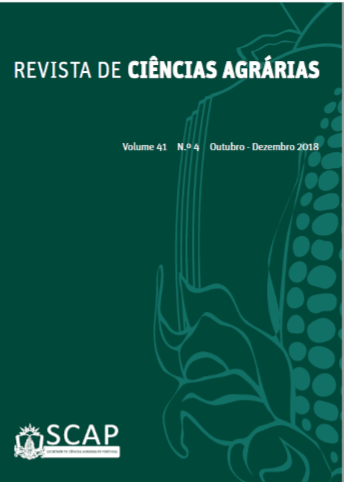Evaluation of the Grassmaster II probe as a tool to estimate the productivity of dryland pastures in Alentejo
DOI:
https://doi.org/10.19084/RCA18180Abstract
Estimating pasture productivity throughout its growth cycle is an indicator of great interest to farmers in planning and supporting decision making. The management of animal grazing, in regards to animal stocking in each parcel, rotation of the animals by the different parcels, calculation of the forage supply requirements and feed supplementation of the animals are based on pasture productivity. The standard method of assessing pasture biomass is based on cutting the forage within a specific area and requires great effort and expense to collect enough samples to accurately represent a pasture. This work presents the results of tests carried out to calibrate a probe (Grassmaster II) in three parcels at Alentejo between 2007 and 2018. The probe was used at 1279 sampling points, in which grass samples were collected for the purpose of determining productivity (total biomass and dry matter production). A monthly regression analysis was performed between corrected meter reading (CMR) measured by the probe and the values of pasture green matter and dry matter (respectively, GM and DM, in kg ha-1). The results showed strong correlations between pasture productivity and CMR, especially in February (r = 0,936; p <0,01; RMSE = 297 kg ha-1 for DM; r = 0,919; p <0,01; RMSE = 377 kg ha-1 for GM) and March (r= 0,807; p<0,01; RMSE= 377 kg ha-1 for DM; r= 0,886; p<0,01; RMSE= 1971 kg ha-1 for GM). During the vegetative cycle of the pasture, the correlation coefficients between the parameters had the tendency to diminish, decreasing the reliability of the estimate at the peak of production (April-May), although still with significant correlation coefficients. These results show that the Grassmaster II probe might support decisions making in dryland pastures and grazing management.


